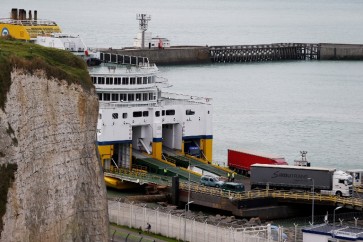Popular Reads
Top Results
Can't find what you're looking for?
View all search resultsPopular Reads
Top Results
Can't find what you're looking for?
View all search results'Indonesia 1998': A satirical illustration of the country's past
An English translation of the comic book aims to help more people understand the tragedy.
Change text size
Gift Premium Articles
to Anyone
C
artoonist Muhammad “Mice” Misrad still vividly remembers what he was doing on May 14, 1998, at the time of the bloody tragedy that has been indelibly etched as one of the country’s darkest moments.
“I was at my office Kompas in Palmerah [Central Jakarta] that day. Trapped inside until the night faded with a suspenseful atmosphere. I heard that Palmerah market had been burned to ashes,” he said during the launch of the English translation of his comic book, Indonesia 1998, at the ASEAN Literary Festival recently.
“I am a smoker and at that time I was really desperate to buy cigarettes. I mustered my courage and walked out to buy cigarettes. Strange, the atmosphere outside my office was really calm. I didn’t feel any tension at all. It was as if nothing was happening.” he continued.
He only grasped the essence of the horror that haunted the capital city after he went home by car at 6 a.m. the following morning.
“When the car drove past Salemba, I cried. Jakarta was in chaos. The sight hurt me deeply. I hope there is something we can learn from this dark history,” he said.
Read also: 'Kamisan' protest continues to be met with silence
Mice said the 125 pages of Indonesia 1998 were not about politics but “a portrait of events that happened post-reformation.”
An English translation of the Mice’s Indonesia 1998 comic book aims to help more people understand the tragedy. (micecartoon.co.id/File)Also present in the discussion were cultural observer Wimar Witoelar, pop culture expert Hikmat Darmawan and the book’s translator, J. Casey Hammond.
Hammond, who teaches European and Asian history and literature at the Singapore University of Technology and Design, said it took two years for him to translate the book. He said translating the book without eliminating Mice’s local humor was the biggest challenge he faced during the project. His purpose in translating Mice’s work was to help people gain a basic understanding about 1998.
Read also: All the things we've lost in translation
What happen in May 1998 is considered as one of the biggest human tragedies in Indonesia since 1965. Numerous people died and many women were raped and yet nobody was ever held responsible for the crimes. The attempt to reveal the masterminds behind the chaos has often met an impenetrable wall, with the perpetrators’ identities still shrouded in mystery.
Hikmat said there are few references to 1998, making it hard for the younger generation to learn about what actually happened at that time.
Translator J. Casey Hammond (Antara/Dodo Karundeng)Mice’s comic book presents a basic understanding of the social phenomena of that time. It offers fresh and comfortable ways to understand and even laugh at the situation. Mice is known as a cartoonist who does not engage in blunt criticism, instead choosing to present his criticisms in a funny and entertaining style.
Mice said he was glad to be born and live in Indonesia because he got a great deal of inspiration from real life. He said he would never create a fictional story as the reality that appeared around him was more than enough to present a story.
“Mice’s comic book was born because of his closeness to life in Jakarta. Because Mice portrays what is important to be noticed. He has the ability to look deeper ethnographically,” Hikmat said.
He added that the book was important as a notice and a mirror for reflection.
The tragedy certainly left deep scars, especially among the survivors. According to data from the joint-fact finding team the riots claimed the lives of 1,217 people with 1,190 being burned to death and the remaining 27 killed by weapons. The team also recorded 85 rape victims during the riots, but the real number could be higher as many victims chose to remain silent.
During the discussion, Wimar also talked about his curiosity whether the 1998 tragedy could have been related to the 1965 massacres and whether they would lead to another tragedy in the future.
“Maybe it’s a trilogy,” Wimar said.
He believes that if a third edition of the tragedy does unravel, there will be a new synthesis that could only be demonstrated through literature.
An audience member asked what people could conclude from the tragedy, to which Wimar replied, “Learn about the nature of the Indonesian people.”
Perhaps, we can also learn from that bloody riot about the beast that hides inside every human being. Mice knows about it and he chooses to laugh at the evil side within him.
***
The writer is an intern at The Jakarta Post.













